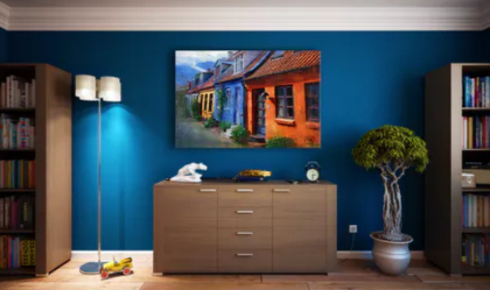Understanding the Real Value Behind an Interior Design Contract
If you’ve ever hired an interior designer—or thought about it—you’ve probably heard the term “contract” more than a few times. It might sound dry, like something you’d just sign and forget. But truthfully, that document is the backbone of a successful project. It’s the piece that sets expectations, defines deliverables, and prevents chaos later. Without a clear interior design contract agreement, both the designer and the client are kind of walking blindfolded through a maze.
Why a Contract Matters More Than You Think
Interior design isn’t just about choosing beautiful tiles or trendy lighting fixtures. It’s about blending creativity with structure. The contract provides that structure. It defines what the designer will do, how long it’ll take, what it’ll cost, and how communication will flow. In short—it’s the glue that keeps ideas, budgets, and timelines from falling apart.
Imagine halfway through your living room redesign, your contractor starts tearing down a wall that you thought was staying put. Or your designer orders Italian marble without telling you it’ll triple the cost. That’s exactly the kind of situation a clear agreement prevents.
A well-written contract protects both sides. It’s not just a legal safety net—it’s a roadmap for a smoother journey.
Breaking Down What’s Inside
A strong contract should read less like a pile of legal jargon and more like a practical plan. Usually, it includes sections like project scope, budget, payment schedule, revisions, purchasing procedures, and project timelines. It outlines who’s responsible for what, how changes will be managed, and even what happens if the relationship ends early.
For instance, if your designer needs to hire third-party vendors for electrical or carpentry work, the agreement should mention how that process works—who approves the vendors, who pays them, and how liability is shared.
One of the most overlooked sections, though, is the interior design contract terms and conditions. This is where clarity lives. It defines how disputes are resolved, how much flexibility there is for extra hours or last-minute changes, and what kind of warranty (if any) the designer provides. It might seem boring on paper, but it’s where you’ll find the real rules of engagement.
The Balance Between Creativity and Legal Boundaries
Good design feels effortless. But behind every effortless space is a lot of structure and documentation. The contract ensures that creativity can thrive without misunderstanding. It lets the designer explore ideas confidently while the client stays informed about limits and responsibilities.
It’s a partnership, really. The designer brings vision; the client brings trust. And that trust is built on what’s written and agreed upon.
You might think the contract restricts creativity, but actually, it enables it. When boundaries and deliverables are clear, both sides are free to focus on the exciting parts—textures, layouts, and that “wow” reveal moment when the final space comes together.
Tailoring Contracts for Residential Projects
Commercial projects and residential ones aren’t the same beast. A hotel renovation has different needs (and liabilities) compared to someone redesigning their apartment. That’s where a residential interior design contract comes into play. It focuses on the nuances of home spaces—privacy, personal comfort, and emotional value.
A home project often involves more personal interaction and emotional decisions. Homeowners might change their minds midway about furniture, flooring, or paint color. The contract should be flexible enough to handle that, yet strong enough to prevent chaos.
It might also include clauses about site access (who’s allowed in the home and when), cleaning up after work, storage of materials, and security of personal belongings. Those small details often matter more in a residential setup than in commercial spaces.
Common Mistakes People Make with Design Contracts
One of the biggest mistakes? Signing without reading thoroughly. People assume it’s standard, so they skip the fine print. But every designer has their own terms, and every project has its own quirks.
Another common issue: verbal agreements. “Oh, the designer said they’d add the balcony lighting for free.” Sure, they might have said that—but if it’s not written down, it’s not guaranteed. Always get everything in writing, no matter how friendly the working relationship feels.
It’s not about distrust—it’s about avoiding confusion later. When you’re knee-deep in renovation dust and trying to remember who promised what, you’ll be glad there’s a document to refer back to.
How to Spot a Well-Written Contract
You can usually tell when a contract has been written with care. It’s organized, uses plain language, and doesn’t feel like a legal minefield. It should give you confidence that your designer is professional and transparent.
Look for clear deliverables: number of design concepts, revision limits, sourcing responsibilities, and payment schedules. The more detail, the better. And don’t hesitate to ask questions or request revisions before signing. A good designer won’t mind clarifying things—they’ll appreciate that you care about doing things right.
The Emotional Side of It All
It’s easy to get caught up in the excitement of redoing your space. You’re picking colors, imagining cozy corners, dreaming about that new kitchen island. The contract might seem like the least exciting part of the process—but it’s the one that gives those dreams a real foundation.
It turns abstract visions into tangible plans. It ensures everyone’s expectations line up and that creativity has the space (and time) to flourish without tension.
Wrapping It Up
At the end of the day, interior design isn’t just about creating beautiful spaces—it’s about creating harmonious relationships between people and their environments. The contract is what keeps that harmony intact.
So next time you hire a designer, don’t treat the paperwork as a formality. Read it. Understand it. Question it if you must. Because that piece of paper is the quiet hero of your project—the one that makes sure your dream home doesn’t turn into a renovation nightmare.
And that’s what good design really comes down to: trust, clarity, and collaboration. Everything else—paint swatches, furniture layouts, light fixtures—is just the finishing touch.

